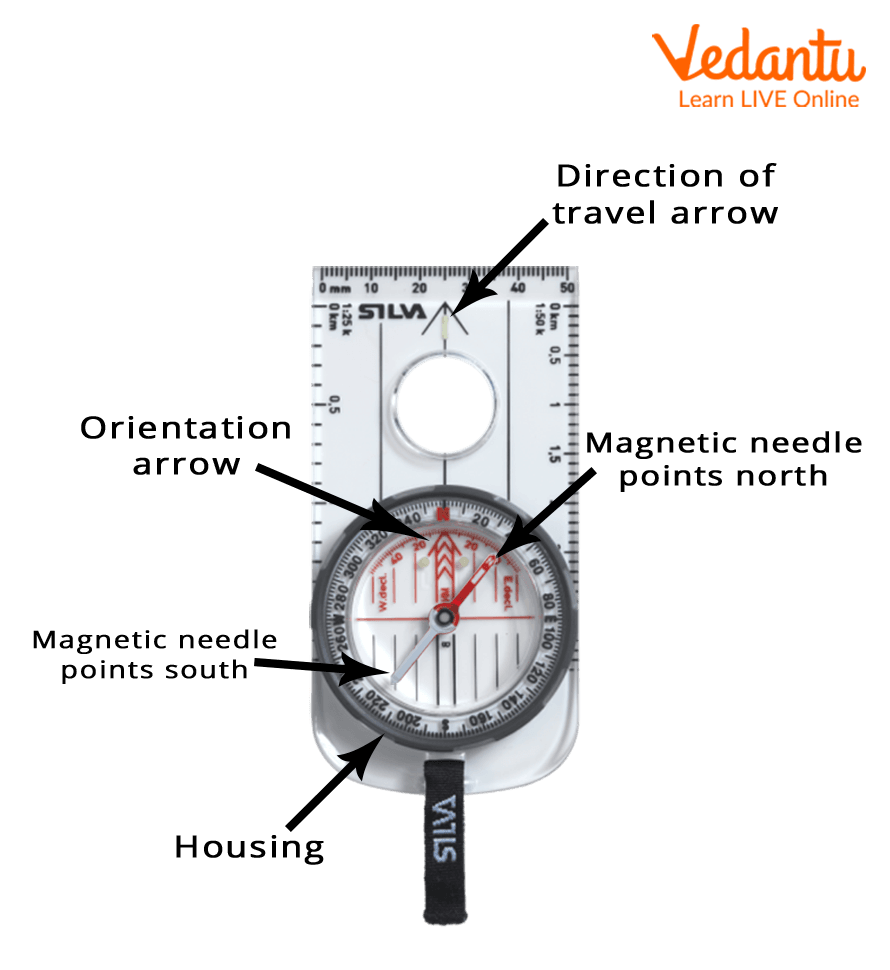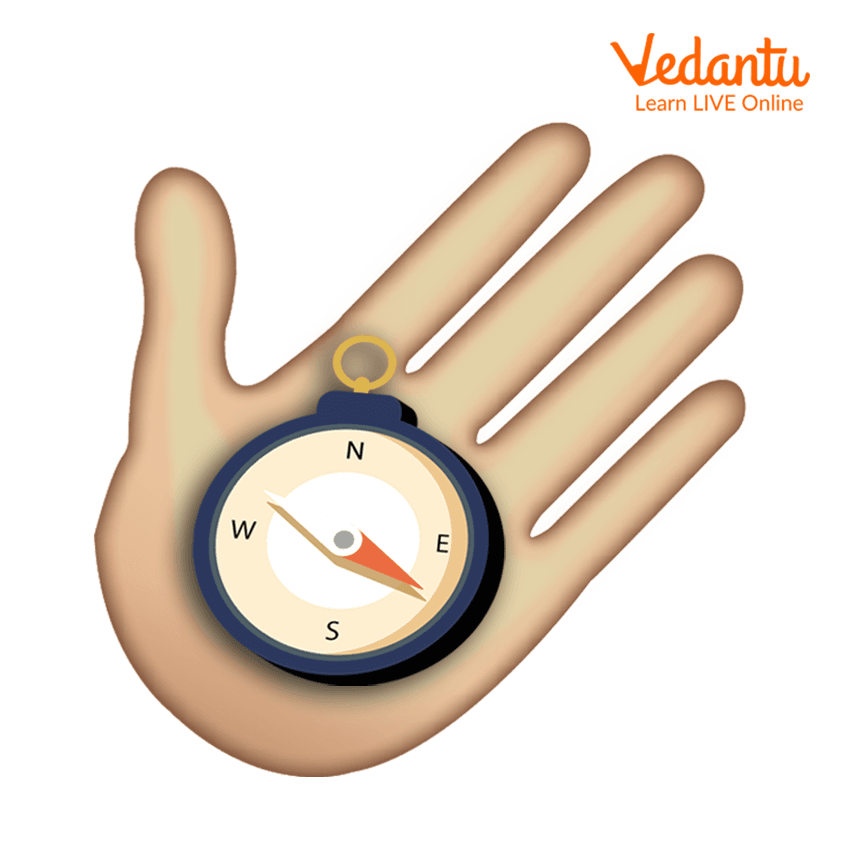




What Do You Understand By Directions?
Direction is a path on which someone or something moves. This is a set course which tells us where the object or people is. “Where are you?” This question actually tries to know the location where you are. You can be heading towards any definite direction. Now directions have some specific names.
Now, what are those names?
North, East, West, and South - they are all directions. Also, they have a great significance in our real lives like when going to a new place, your parents use a GPS to determine which path they need to follow to reach their destination.
Although here we talked about a mobile device, we have something called a directional compass. It is also used for gaining direction sense. But what is the use of this device when mobile comes in handy, and who uses it at present? We will look into these questions on our page.
What Is the Use of Direction Sense?
A direction compass shows the cardinal directions used for navigation and geographic orientation. Now, let us understand how to read a direction compass.
There are four directions in the compass: north, south, east, and west. Around the whole compass, there are few measurements.
The most important part of the compass is the needle that swings around the compass as you move, but the red end always points in the direction of north, and the white (or sometimes black/blue) end always points in the direction of south. There's also an arrow on the housing, which is known as the ‘orientation arrow’ and an arrow on the baseplate called the ‘direction of travel arrow’. Why is it called a direction of travel arrow? Well, the direction of the destination is indicated by it on the compass.
Read the following to know how you can use a direction compass.

Components of the Direction Compass
1. Place the compass flat on an even place or even your palm, with the direction of travel arrow pointing towards where you want to travel as you can see in the image below:

A Compass Placed on the Palm of a Hand
2. Now, twist your compass dial in a manner that the orienting arrow lines up with the red end of the magnetic needle like you see in the image below:

A Hand Holding a Compass
3. Please note that the direction of the travel arrow should line up with your ‘bearing’ (Here, the bearing is the angle you want to walk in) – now you can begin your journey by following this arrow.
4. If you feel like you’re going off your path, again try to line up your orienting arrow with the needle until you are on track.
Hence, after you get on track, you will always notice that your direction of the travel arrow will point to where you want to go (also, never forget to keep your compass dial in the same position for sure).
What Is the Use of a Direction Compass?
The uses of direction compass can be justified from the following:
The direction compass helps in determining the direction which is relative towards the magnetic pole of the earth.
This direction compass helps the travellers to find the correct route.
It is a must carry item for the wanderers and adventurers, who go on adventures in seas and in forest.
This is a safe device for those sailing in the sea, they know where their ship is heading with the help of the direction compass.
Conclusion
Thus, you can see that the direction compass has a great significance in building direction sense, especially in places, where you cannot use a GPS tracker. Kids can learn about the poles and other combined directions like northeast or southwest. Also, the direction compass has greatly improved navigation and ensures the safety and efficiency of travel.
FAQs on Direction Sense Through Direction Compass
1. What is a direction compass?
A direction compass is a simple tool used to determine directions relative to the Earth's poles. It features a magnetised needle that freely aligns with the Earth's magnetic field, with one end always pointing North. The face of the compass, known as the compass rose, displays the cardinal directions: North (N), South (S), East (E), and West (W), often with their corresponding degree markings (N at 0°, E at 90°, S at 180°, and W at 270°).
2. How do you use a compass to find directions?
To use a compass effectively, you should follow these steps:
Hold the compass flat and level in your palm to allow the needle to move freely.
Wait for the needle to settle. The coloured or marked end of the needle will point towards magnetic North.
Once you have identified North, you can easily determine the other directions. If you are facing North, East will be to your right, West to your left, and South will be directly behind you.
3. What is 'direction sense' and why is it important?
Direction sense is the fundamental skill of identifying directions and understanding the spatial relationship between them. This skill is not only crucial for practical tasks like reading a map or navigating a new city but is also a key component of logical reasoning tests in many academic curricula. As detailed in the CBSE Class 5 Maths chapter on Mapping Your Way, a strong direction sense is essential for developing spatial awareness from a young age.
4. Where are direction compasses commonly used?
Direction compasses are vital instruments used across various activities and professions for navigation and orientation. Key users include:
Mariners and Aviators: For navigating ships and aircraft across vast oceans and skies.
Hikers and Campers: To safely navigate trails and wilderness areas.
Geologists and Surveyors: For mapping terrain and identifying specific locations.
Architects: To orient buildings correctly based on plans and environmental factors.
5. How does a compass needle know which way is North?
A compass works because the Earth behaves like a giant bar magnet, with a magnetic North and South Pole. The needle in a compass is a small, lightweight magnet. Due to the laws of magnetism, this needle is attracted to and aligns itself with the Earth's magnetic field lines, which run from the South Pole to the North Pole. This is the same principle that causes a freely suspended bar magnet to align itself in a North-South direction, a concept often explored in engaging science models for Class 6.
6. What is the difference between a direction compass and the compass in a geometry box?
While they share the same name, these two instruments serve completely different purposes. A direction compass is a navigational tool with a magnetic needle for finding directions. In contrast, a geometry box compass is a drawing instrument used in mathematics for creating circles and arcs. As seen in subjects like Practical Geometry, it consists of two legs—one with a sharp point and the other to hold a pencil—and has no magnetic properties for telling direction.
7. Besides a compass, what are some other ways to find directions?
If you don't have a compass, you can use natural clues for direction. The most common method involves the Sun, which rises in the East and sets in the West. By observing its position, you can get a general sense of direction. At night in the Northern Hemisphere, the Pole Star (Polaris) can be used to reliably locate North, as it remains in a fixed position in the sky.
8. Can animals sense direction without a man-made compass?
Yes, many animals possess a remarkable in-built sense of direction. This ability, known as magnetoreception, allows them to perceive the Earth's magnetic field for navigation. For instance, migratory birds, sea turtles, and salmon use this internal compass to travel thousands of miles during migration with incredible accuracy. They often combine this sense with other cues, such as the position of the sun and stars.









